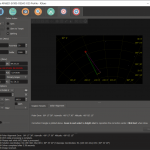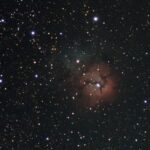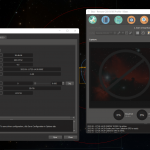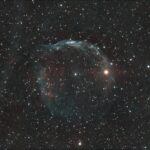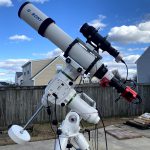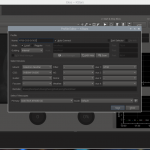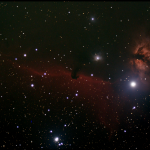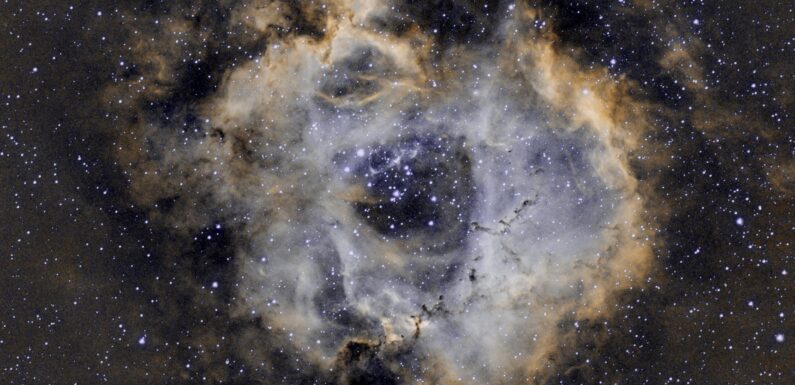
A cold clear night. I uncovered the scope just before dark. I started my polar alignment as soon as it was dark enough to get enough stars to plate solve, which was just after 6 PM. I had the ZWO Duo-Band Filter in so I decided to capture a couple of large fairly bright nebula, the Heart Nebula and the Rosette Nebula.
After getting the mount polar aligned, I used the Ekos Focus Module to auto focus, my focus steps were 10346. Plate solving calculated my focal length to 569.9 mm or F/5.6.
| Primary (Imaging) | Secondary (Guiding) |
|---|---|
| Scope: SVBONY SV503 102ED Reducer/Flattener: SVBONY SV193 0.8 FR/FF Filter: ZWO Duo-band Filter Camera: ZWO ASI294 MC Pro, Cooled to -10 C Focuser: ZWO EAF Mount: Sky Watcher EQ6-R Pro |
Scope: SVBONY SV106 60mm Guide Scope Camera: Orion Star Shooter Autoguider (OSSAG) |
| Telescope Control, Image Acquisition, and Image Processing Software | |
|
Equipment Control and Imaging Software: KStars/Ekos connecting to INDI Server on a Raspberry Pi Stacking and Processing Software: Siril astronomical image processing tool |
|
I had really only planned to capture a few hours of the Rosette Nebula, but it was still pretty low in the East, so I decided to get a little time on the Heart Nebula while I waited for NGC 2237 to rise a bit more.
In processing I am using a master dark and master flat I created in an earlier session. The master dark seems to be working great, but I really need to shoot some new flats.
IC 1805, the Heart Nebula, an emission nebula located in the constellation Cassiopeia. This is 21 x 180 second exposures at 121 gain, 30 offset, and bin 2×2. Calibrated, stacked, cropped, and processed with Siril. The HubbleMatic script was used to create the HST palette.
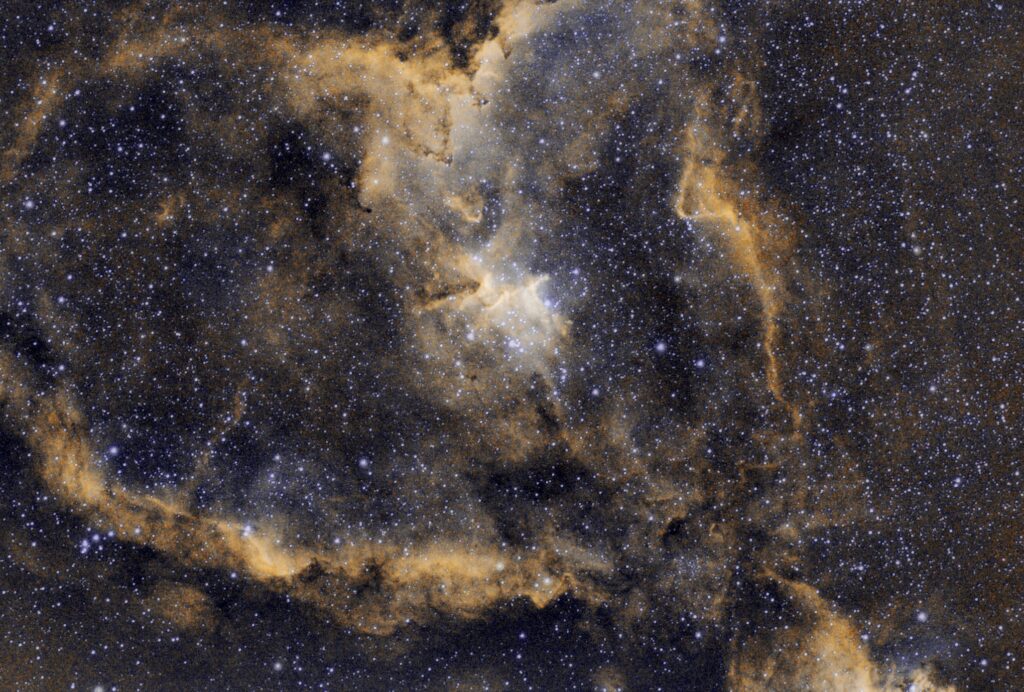
Cannot quite get all of the Heart Nebula in the field of view, pretty close. The nebula is more than 2 degrees across which is about 4 times the diameter of the full Moon. I would have collected a bit more light from here, but the Heart Nebula was really close to the meridian and decided to move on before the mount did a flip. A little more time would have probably cleaned things up a fair bit. Still looks pretty good.
NGC 2237, the Rosette Nebula, a H II region located in the constellation of Monoceros. This is 40 x 180 second exposures at 121 gain, 30 offset, and bin 2×2. Calibrated, stacked, cropped, and processed with Siril. The HubbleMatic script was used to create the HST palette.
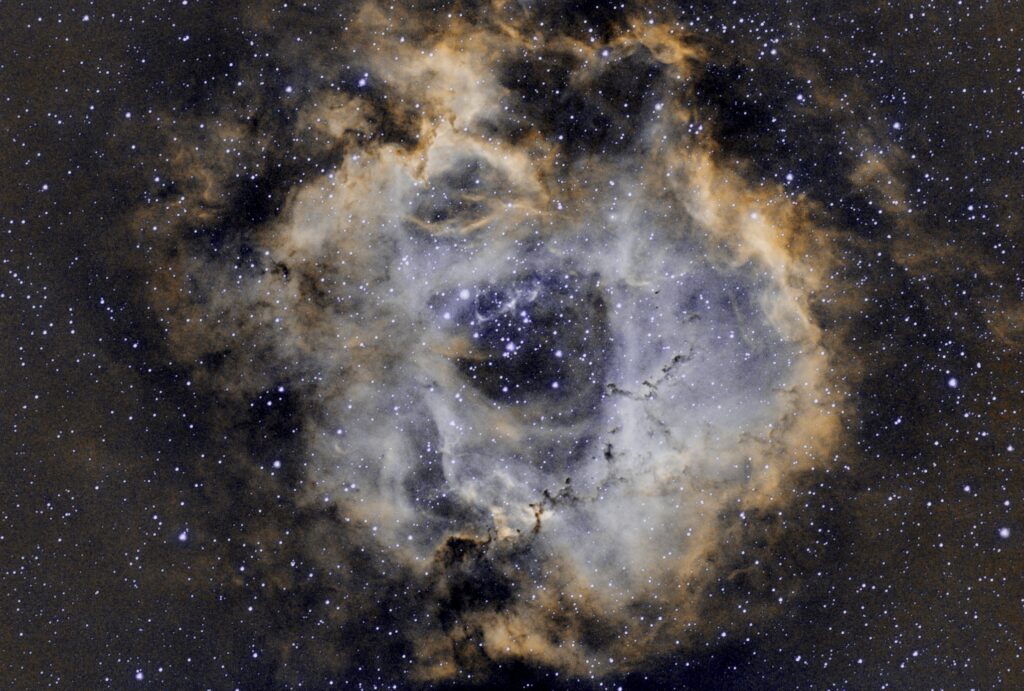
I centered on the open cluster, NGC 2244 to frame the nebula. Some interesting details in the dark clouds. Really enjoyed watching this in the live stack and the results after a few minutes of processing in Siril are pretty awesome.
For comparison, here is the same stack of the Rosette Nebula processed with Siril without using the HubbleMatic script. This is the 40 x 180 second One Shot Color (OSC) stack with master dark and flat applied. Cropped, background extraction, and remove green noise, and then stretched in Siril.
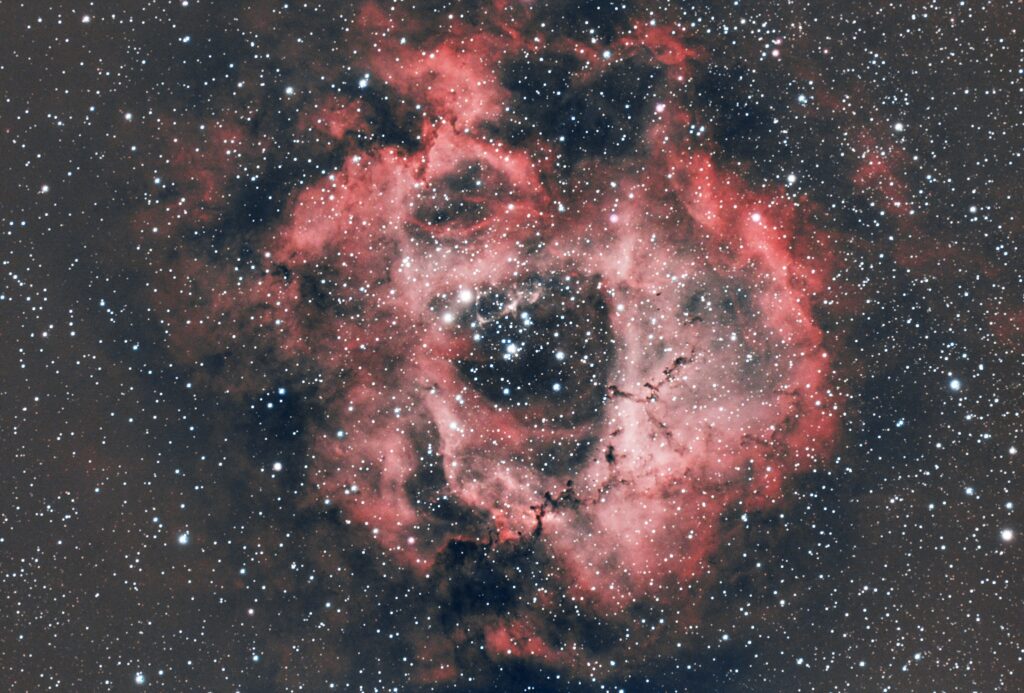
I think the Hubble palette shows a bit more contrast in the details, but this looks really nice as well. Plus with the red… well it looks like a rose 🙂
I covered the scope up at just after 10 PM, it was VERY cold out there. Nice quick night capturing some far away light.


